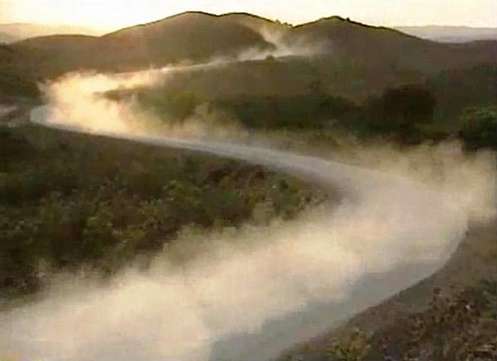FWP:
SETS == IZAFAT;
KYA; VARNAH
ROAD: {10,12}
Nazm points out that kis qadar can be taken to operate the way kahāñ does; in my terms, it's a variant of the 'kya effect'. Nazm points out two rhetorical possibilities of the second line. First, the affirmative (2a): how much salt is created in the world! (There's so much of it, but what good is any of it to the lover? He disdains and rejects it all, since his own preferred salt is the dust of the beloved's path). Second, the negative rhetorical question (2b): how much salt is created in the world-- how could it possibly be enough?! (The lover uses so much of it that he could never find enough merely from the normal supply, so he must improvise and find his own private source.)
As so often, this unresolvable back-and-forthness between two opposite meanings, both of which go so perfectly with the first line, is the real charm and relish of the verse. Ghalib is inshāʾiyah almost to the point of madness sometimes.
Note for grammar fans: The first line, shown with five iẓāfat constructions, is really structured like this:
gard (-e) rāh-e yār hai sāmān (-e) nāz-e zaḳhm (-e) dil
In other words, three of those iẓāfat constructions
are optional, rather than being required by the meter. (As usual, I follow
Arshi, who puts in all five.) By removing a selected one or more of them, we could alter the grammar considerably. For example, if we delete
the one after sāmān , we could make, 'the dust of the
beloved's path is equipment, oh Coquetry of the wound of the heart!' By deleting
the first one, we could make 'oh Dust, the beloved's path is the equipment
of the coquetry of the wound of the heart'. And so on, with several more possibilities
available. Perhaps they aren't profound in their effects, but nevertheless
they can't be ruled out by any kind of fiat. And surely if we can notice them, Ghalib himself would have noticed them-- and left them there for our imaginations to play with.

Nazm:
He says, the existence of salt in a wound is no such cause for pleasure. My wound plumes itself greatly on being full of the dust of the path of the beloved. Otherwise, what lack of salt is there in the world? Another aspect is that we would take kis qadar to mean, how/where [kahāñ] is so much salt possible in the world, about which the wound in my liver could be proud? (78)
== Nazm page 78